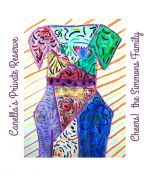For nearly two millennia oak has been the original wine pairing, but why?
It originally served as a way to transfer wine from point A to B, but today it’s a staple in nearly every winery and a quality marker in the minds of consumers. Most wine drinkers know that oak imparts complexity, softens tannins and inflates prices. But what else is there to this dynamic duo?
Let´s take a look at a few things you never knew about oak in winemaking.
1.Why oak and not a different wood?
Most wine barrels are made from staves, or slabs, of oak wood. Though some rouge winemakers are experimenting with other trees in the forest, most hold fast to tradition. Why? Because oak has several distinct advantages over woods such as pine, maple, and chestnut. Oak is easier to shape into arches and seals well when in contact with liquid – which is why it was historically used in shipbuilding. It also adds the most complementary flavors to wine, such as vanilla and coconut notes. Other woods impart more of a resin flavor to the wine.
2.Why is oak toasted?
During the creation of oak barrels, coopers (barrel makers) may toast the barrels over an open fire. The heat from the fire caramelizes wood sugars on the inside surface of the staves, allowing the barrel to impart flavors of sweet vanilla and toast. Barrels come in low, medium, and high toast. The higher the toast, the stronger the flavors of spice and smoke that result in the final wine.
3.What’s the difference between French and American oak?
As with wine, region of origin affects oak’s characteristics. Oak for winemaking primarily comes from 5 forests in France and 18 states in the USA, though Hungarian and Slovenian trees are also used.
French oak has a tight grain, and imparts more tannins and fewer aromatics. It is considered to have more finesse and is sold at steeper prices. Across the seas, American oak tends to have a looser grain, and imparts more prominent flavors of vanilla, coconut, and dill. They also generally cost 50% less.
4.What are oak alternatives?
As innovative winemakers look to economize without sacrificing quality, many are abandoning the barrel and turning to oak alternatives.
Oak comes from different regions, can be toasted to different degrees, and can be shaped into barrels of different sizes – ranging from low to high toast. However, oak chips, staves, cubes, and shavings can accomplish a similar result with a much more palatable price tag.
During or after the fermentation process these oak pieces are steeped in the wine, much like a tea bag soaks in water. Because the wine is in contact with more surface area of the wood, more flavors are imparted.
Oak powder is also occasionally used, but is generally reserved for home winemaking kits.
5.Do I really have to pay for it?
There are many different factors that influence the final price of a bottle of wine: the cost of the grapes, machinery, labor etc. – and the cost of oak. Obviously oaked wines carry a higher price, but why exactly?
The cost of acquiring the barrels themselves is the biggest culprit – today the average new French barrel costs between $850 and $4,000, and that value depreciates with every usage. Think of it this way: the barrel occupies space (real estate) within the winery, and the wine occupies real estate within the barrel. The newer the barrel, the higher the rent. And the longer the stay, the higher the bill.
Cheers! Drink Northwest Cellars.
 Author Bio: Madeline Blasberg is a Certified Wine Consultant and has spent time living in Mendoza, Argentina where she was surrounded by wine, both personally and professionally. She currently acts as the Official Wine Commentator and Reviewer for Etching Expressions.
Author Bio: Madeline Blasberg is a Certified Wine Consultant and has spent time living in Mendoza, Argentina where she was surrounded by wine, both personally and professionally. She currently acts as the Official Wine Commentator and Reviewer for Etching Expressions.












0 Comments